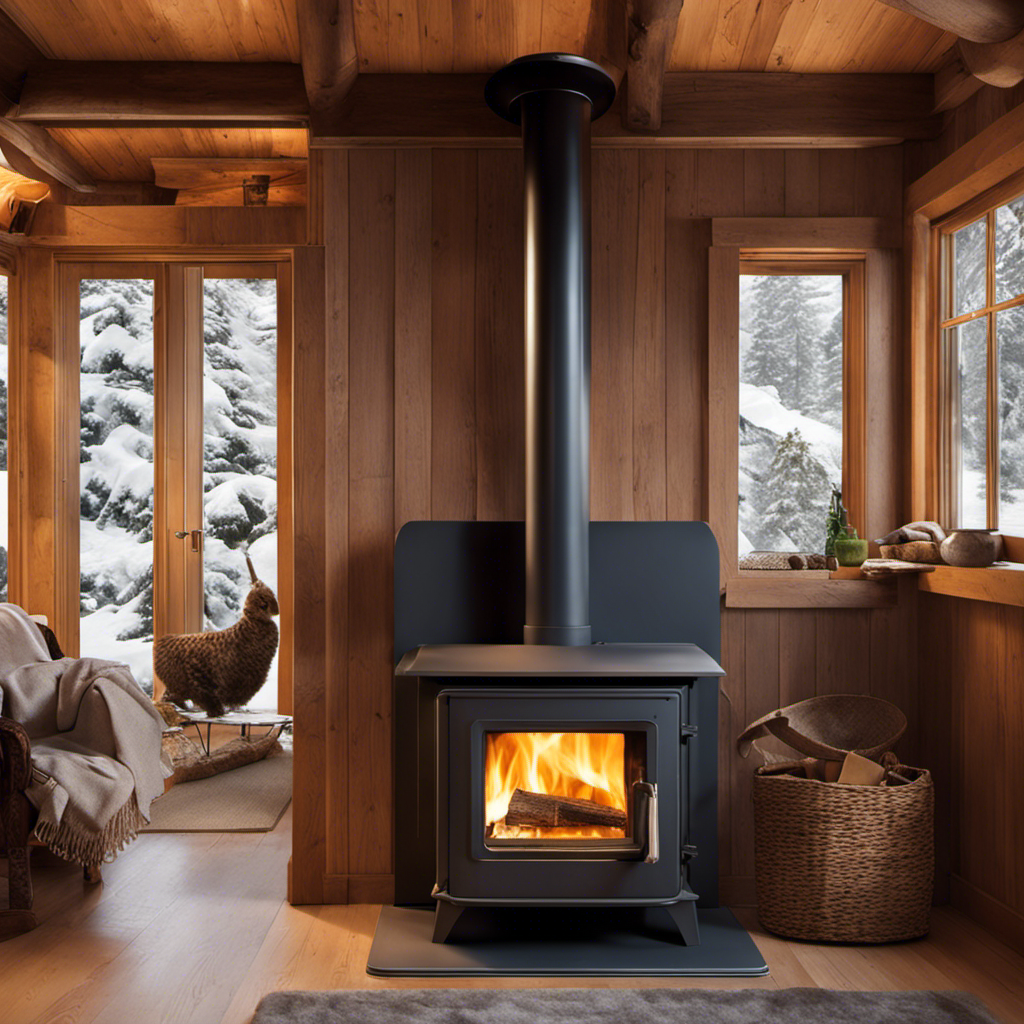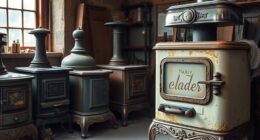I am here to emphasize the significance of using a vertical chimney with wood-burning stoves.
Picture a chimney as the sturdy backbone of your stove, providing the crucial vertical airflow necessary for efficient and safe operation.
But how much straight pipe do you actually need?
In this article, I’ll guide you through the factors to consider, the calculations to make, and the common mistakes to avoid when installing vertical straight pipe.
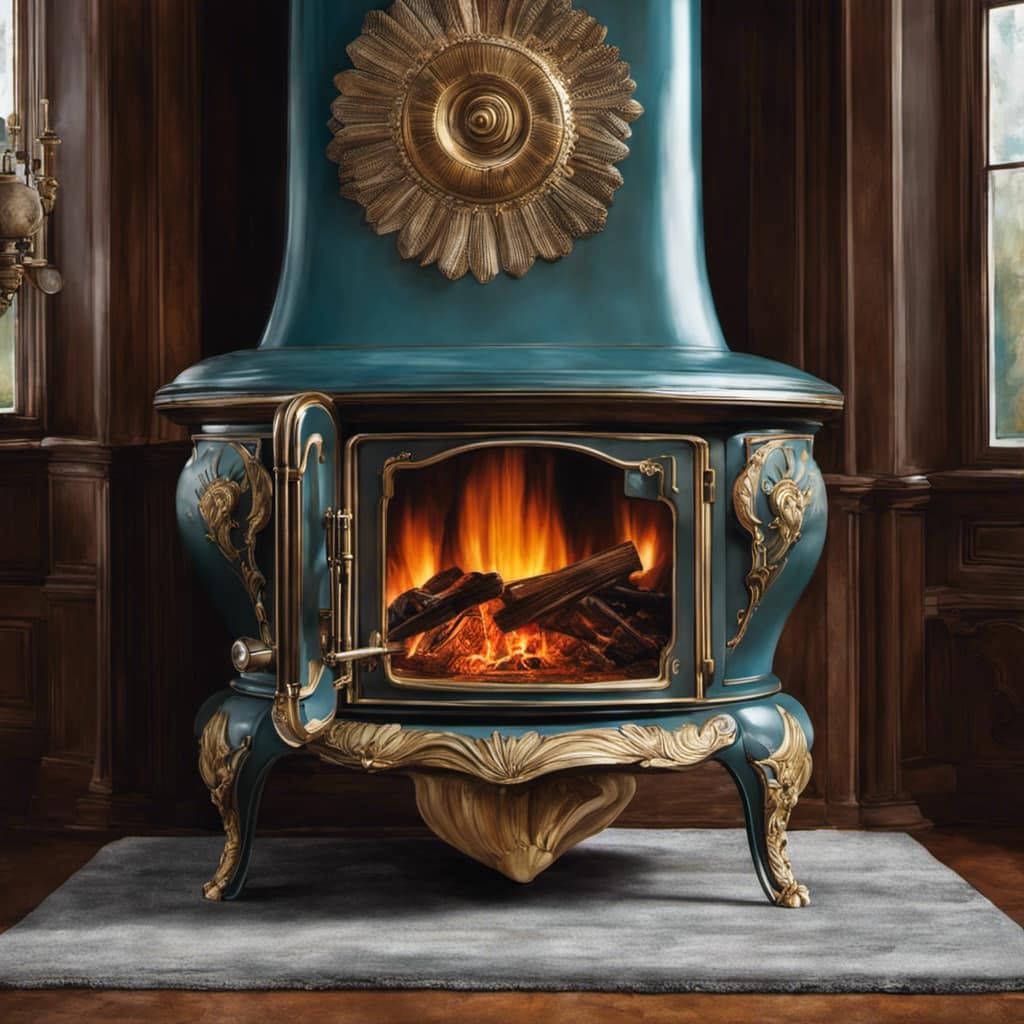
Let’s get your wood stove system working flawlessly.
Key Takeaways
- Proper ventilation is essential for efficient and safe operation of wood stoves.
- Sufficient vertical straight pipe allows for proper draft and airflow.
- Inadequate vertical straight pipe can lead to poor combustion and reduced heat output.
- The correct amount of vertical straight pipe ensures energy efficiency and minimizes the risk of smoke and harmful gases entering the living space.
The Importance of Vertical Straight Pipe for Wood Stoves
I always ensure that there’s enough vertical straight pipe for my wood stove because it’s crucial for optimal performance.
Proper ventilation is essential for a wood stove to operate efficiently and safely. When it comes to venting, having the right amount of vertical straight pipe is crucial.
This allows for the proper draft and airflow, which helps the stove burn efficiently and reduces the risk of smoke and harmful gases entering the living space. Without enough vertical straight pipe, the stove may struggle to draw in fresh air and expel combustion byproducts effectively.
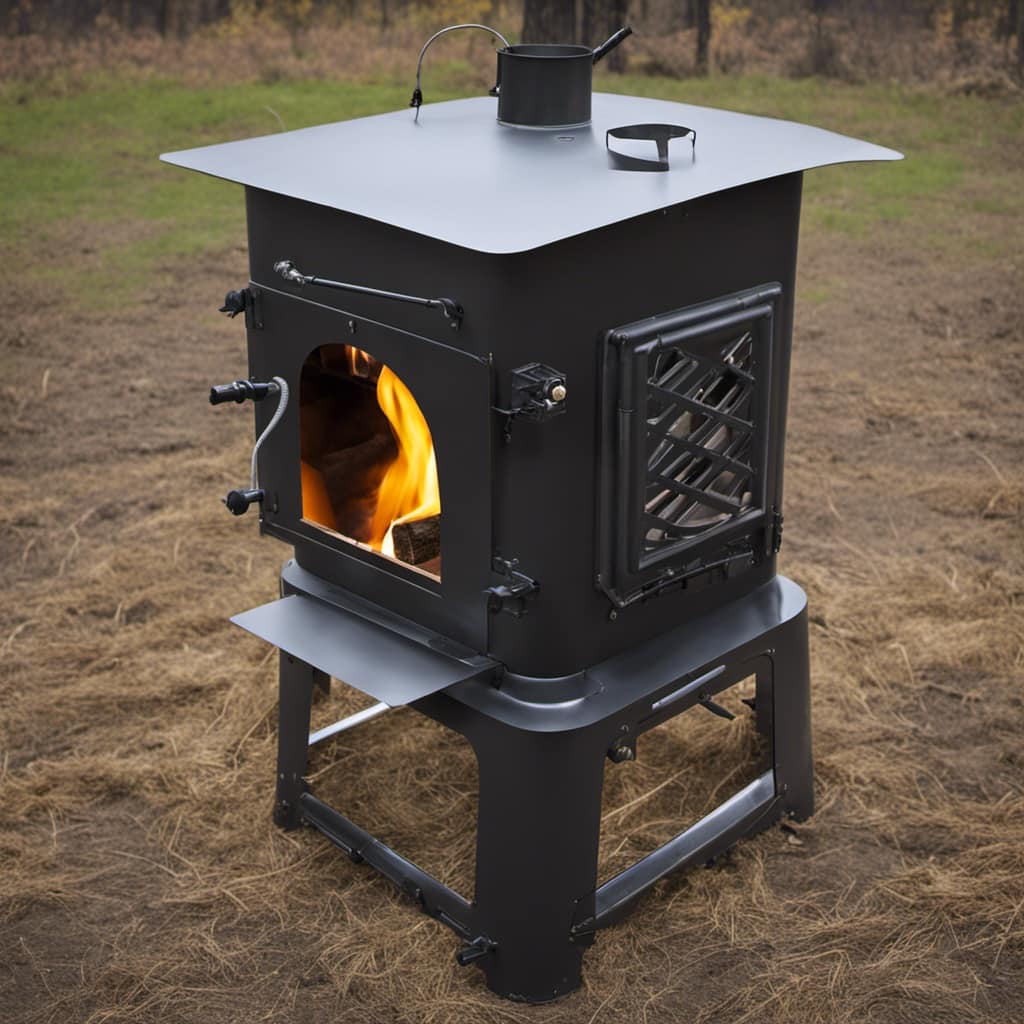
This can lead to poor combustion, reduced heat output, and even potential health hazards. Additionally, having the correct amount of vertical straight pipe ensures energy efficiency by maximizing the stove’s ability to transfer heat to the surrounding area.
Factors to Consider When Determining Vertical Straight Pipe Length
One factor to consider when determining the vertical straight pipe length is the height of the ceiling in the room. Proper ventilation in wood stove systems is crucial for optimal performance and safety. Inadequate vertical straight pipe length can have a significant impact on wood stove performance.
Here are four important considerations when determining the vertical straight pipe length:
Ceiling Height: The height of the ceiling will determine the overall length of the vertical straight pipe. It’s essential to have sufficient clearance from the stove to the ceiling to ensure proper airflow.
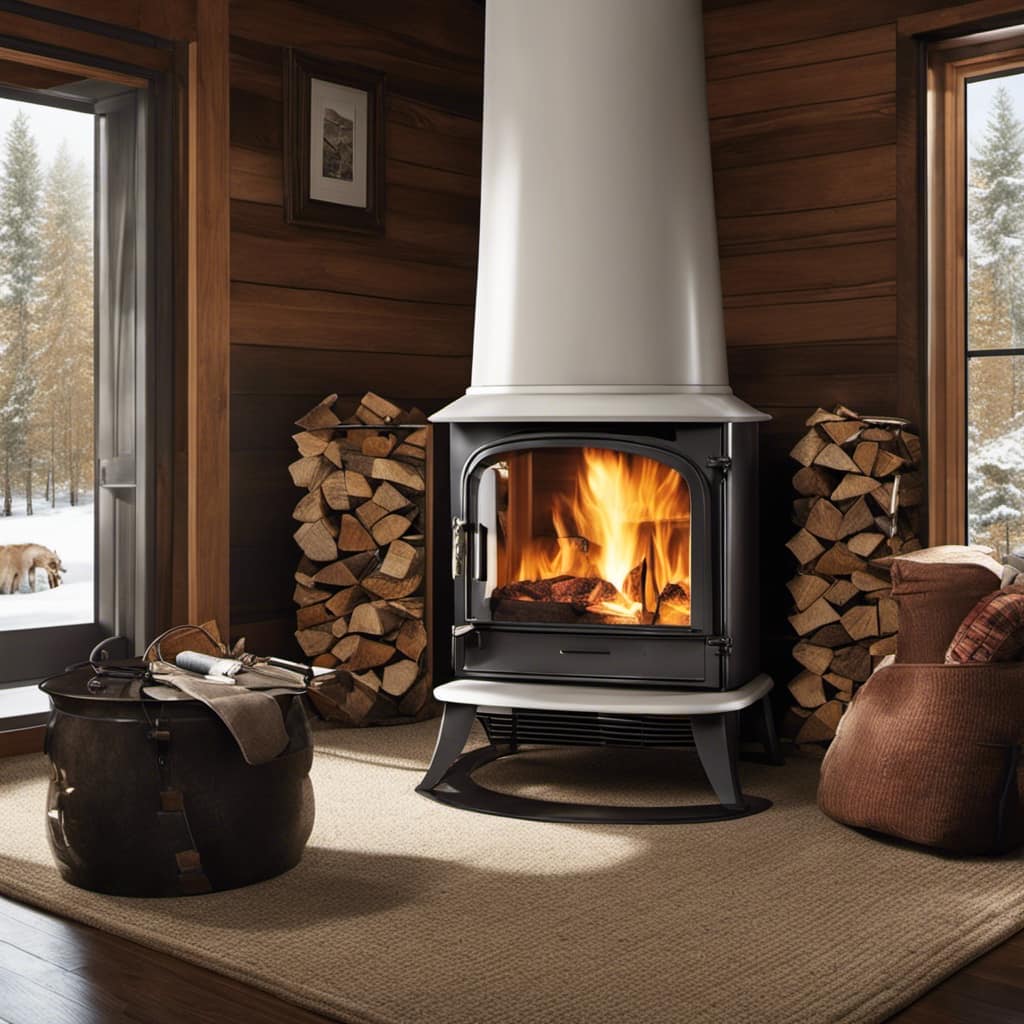
Draft Efficiency: A longer vertical straight pipe can help improve the draft efficiency of the wood stove system. This allows for better combustion and more efficient heat transfer.
Smoke Ventilation: The vertical straight pipe length affects the ability of the system to effectively vent smoke and combustion byproducts. Insufficient length can result in backdrafts and poor ventilation.
Safety Regulations: Building codes and safety regulations often dictate the minimum vertical straight pipe length required for wood stove installations. It’s crucial to adhere to these regulations to ensure safe operation of the system.
Considering these factors will help determine the appropriate vertical straight pipe length for your wood stove system, ensuring proper ventilation and optimal performance.
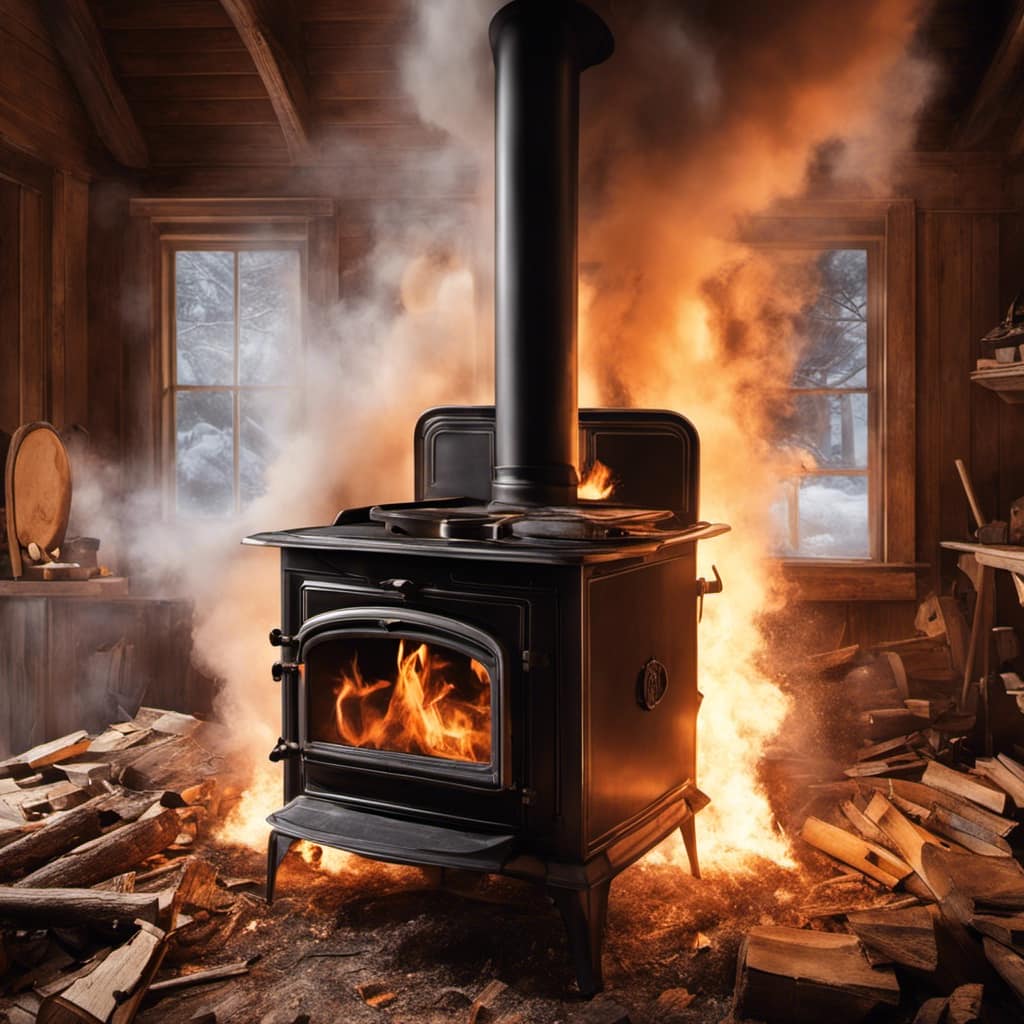
Calculating the Right Amount of Vertical Straight Pipe for Your Wood Stove
Calculating the right amount of vertical straight pipe for my wood stove is essential for ensuring efficient heat transfer and proper ventilation. When determining the length of the vertical straight pipe, several factors must be considered, including the type of wood stove, the height of the ceiling, and the materials used. To help visualize the process, I have created a table that outlines the recommended pipe length based on stove type and ceiling height:
| Stove Type | Ceiling Height | Recommended Pipe Length |
|---|---|---|
| Freestanding | 8 feet | 12-15 feet |
| 10 feet | 15-18 feet | |
| 12 feet | 18-21 feet | |
| 14 feet | 21-24 feet |
Common Mistakes to Avoid When Installing Vertical Straight Pipe for Wood Stoves
When installing vertical straight pipe for wood stoves, it’s crucial to avoid common mistakes such as using improper materials or neglecting proper clearances. To ensure a safe and efficient installation, here are four key points to keep in mind:
Use the right materials: It’s important to use high-quality, heat-resistant materials specifically designed for wood stove installations. Using improper materials can lead to overheating, leaks, or even fires.
Proper clearances: Maintaining proper clearances between the pipe and combustible materials is essential to prevent heat transfer and potential fire hazards. Be sure to follow the manufacturer’s instructions and local building codes to determine the required clearances.
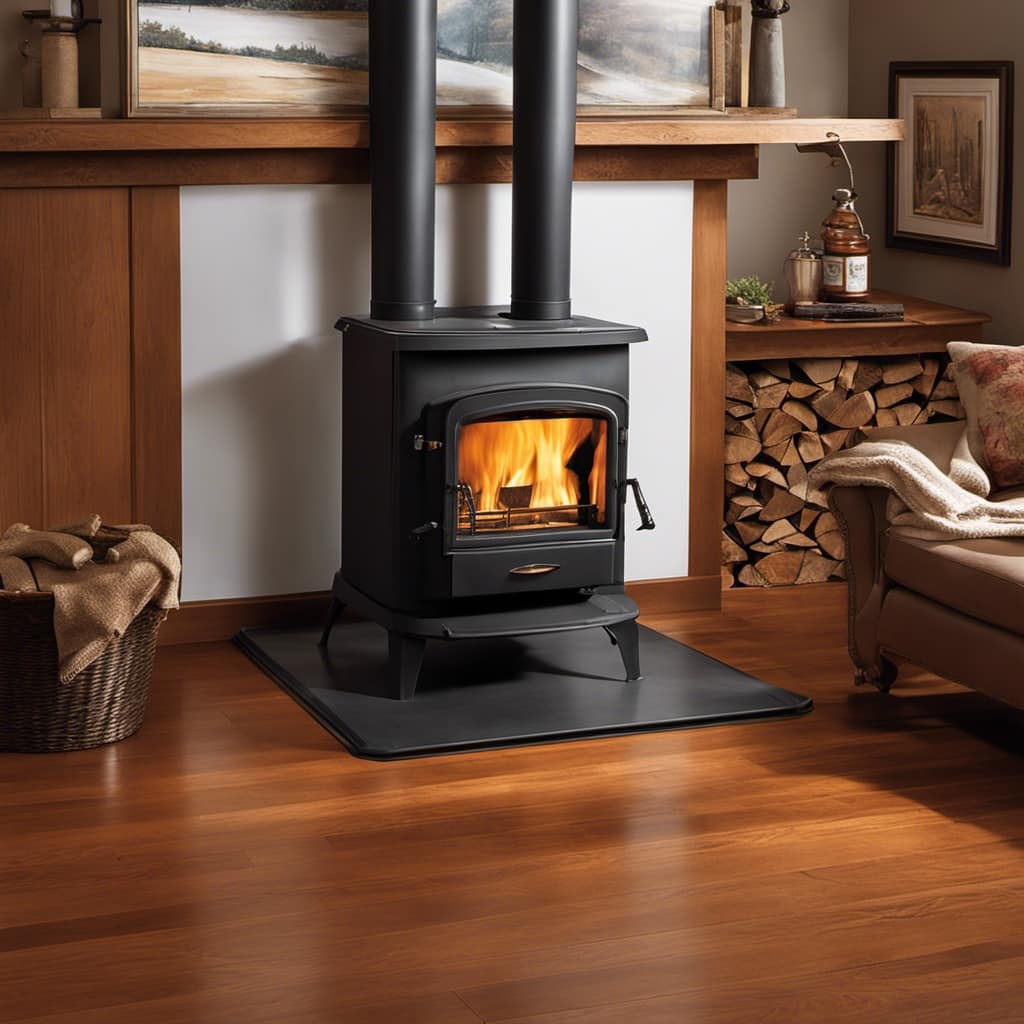
Correct pipe size: Choosing the correct pipe size is crucial for proper airflow and efficient combustion. Using the wrong size can result in poor performance and increased creosote buildup.
Secure connections: Ensure that all connections between the vertical straight pipe and other components are properly sealed and secured. This will prevent leaks and maintain optimal performance.
By avoiding these common mistakes and following proper installation techniques, you can ensure a safe and effective wood stove system.
Now, let’s move on to discussing tips for maintaining and cleaning vertical straight pipe in wood stove systems.

Tips for Maintaining and Cleaning Vertical Straight Pipe in Wood Stove Systems
I personally find it helpful to regularly inspect and thoroughly clean the vertical straight pipe in my wood stove system, as it effectively improves the overall performance and safety. One of the main reasons for this is to prevent chimney fires, which can be extremely dangerous and damaging. Chimney fires occur when creosote, a byproduct of burning wood, accumulates in the chimney and ignites. This buildup of creosote is a significant danger and should be addressed promptly. By cleaning the vertical straight pipe, you can remove any creosote buildup and reduce the risk of a chimney fire. Here are some tips for preventing chimney fires and maintaining a clean vertical straight pipe:
| Tips for Preventing Chimney Fires | The Dangers of Creosote Buildup |
|---|---|
| Regularly inspect the chimney and vertical straight pipe for creosote buildup. | Creosote buildup is highly flammable and can lead to chimney fires. |
| Use dry and seasoned wood to minimize the amount of creosote produced. | Creosote is a byproduct of burning wood and can accumulate in the chimney. |
| Install a chimney cap to prevent debris and animals from entering the chimney. | Debris and animals can obstruct the chimney, increasing the risk of a chimney fire. |
| Schedule a professional chimney cleaning at least once a year. | Professional chimney cleaning can remove any stubborn creosote buildup and ensure a safe wood stove system. |
| Monitor the smoke coming from the chimney for any signs of excessive creosote buildup. | Excessive smoke or a strong odor coming from the chimney may indicate a creosote problem. |
Does Increasing the Length of Vertical Pipe for My Wood Stove Make It Hotter?
Increasing the length of the vertical wood stove pipe hotter can indeed make the stove hotter. This creates more airflow and allows for more efficient burning, resulting in increased heat production. However, it’s important to consult a professional to ensure proper installation and avoid any potential safety hazards.
Frequently Asked Questions
What Type of Wood Stove Is Best for Vertical Straight Pipe Installation?
In my experience, the best wood stove brands for vertical straight pipe installation are [insert brand names]. There are pros and cons to this type of installation, including [list pros] and [list cons].
Can I Install a Wood Stove Without Any Vertical Straight Pipe?
I would not recommend installing a wood stove without any vertical straight pipe. Proper venting is crucial for safety and efficiency. There are alternative venting options available, but it is best to consult with a professional for guidance.
What Is the Maximum Vertical Straight Pipe Length That Can Be Used With a Wood Stove?
The maximum length of vertical straight pipe for a wood stove depends on safety precautions. It is important to consult the manufacturer’s instructions and local building codes to ensure proper installation and ventilation.
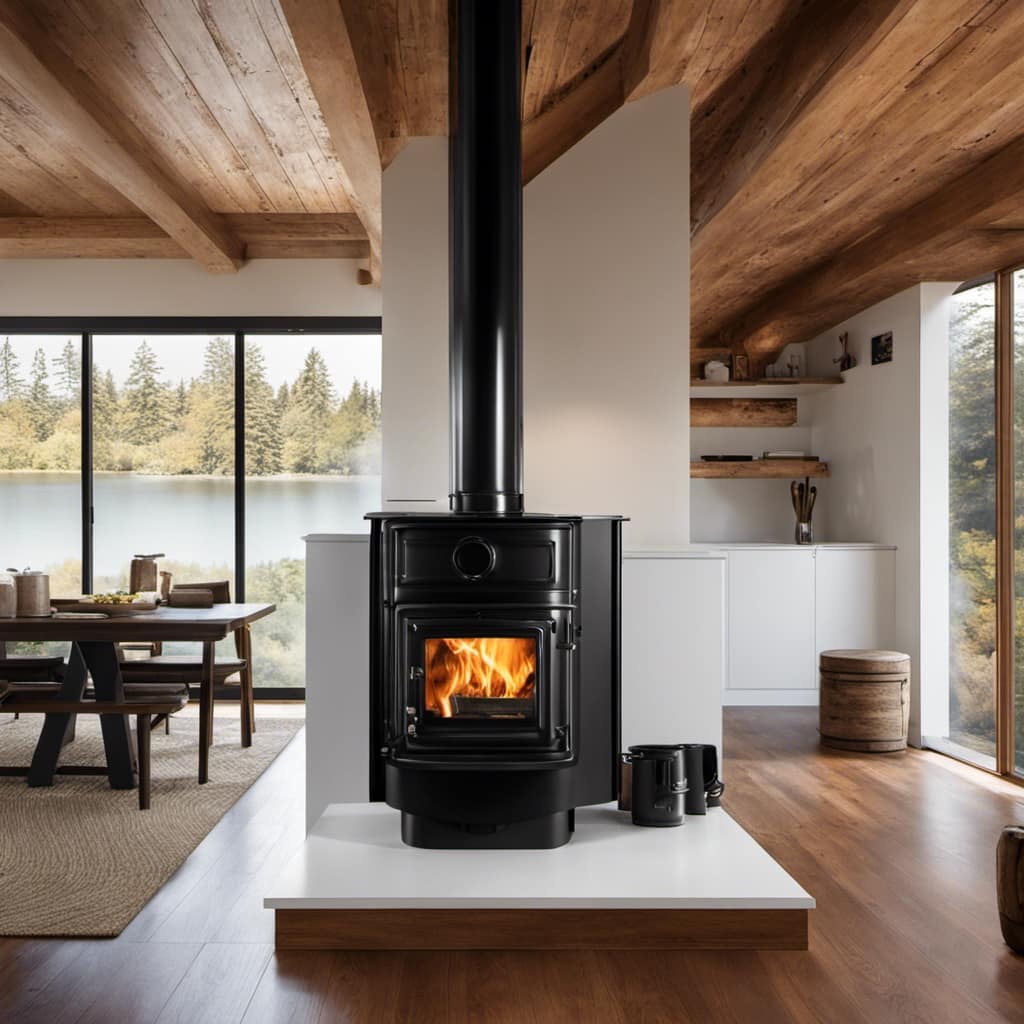
Do I Need to Use a Specific Type of Pipe for Vertical Straight Pipe Installation?
I don’t need a specific type of pipe for vertical straight pipe installation. However, it’s important to choose high-quality pipes that are designed for wood stoves. Vertical straight pipe installation offers benefits like efficient draft and improved heat distribution.
Can I Install a Wood Stove With an Existing Chimney Without Any Vertical Straight Pipe?
Installing a wood stove without any vertical straight pipe can have its pros and cons. It is important to consider proper ventilation and ensure the use of a chimney liner for safe and efficient operation.
Conclusion
In conclusion, when it comes to determining the right amount of vertical straight pipe for your wood stove, it’s crucial to consider various factors such as chimney height and stove efficiency.
While it may seem counterintuitive, remember that more isn’t always better. Too much vertical pipe can actually hinder the proper flow of smoke, leading to inefficient burning and potential hazards.
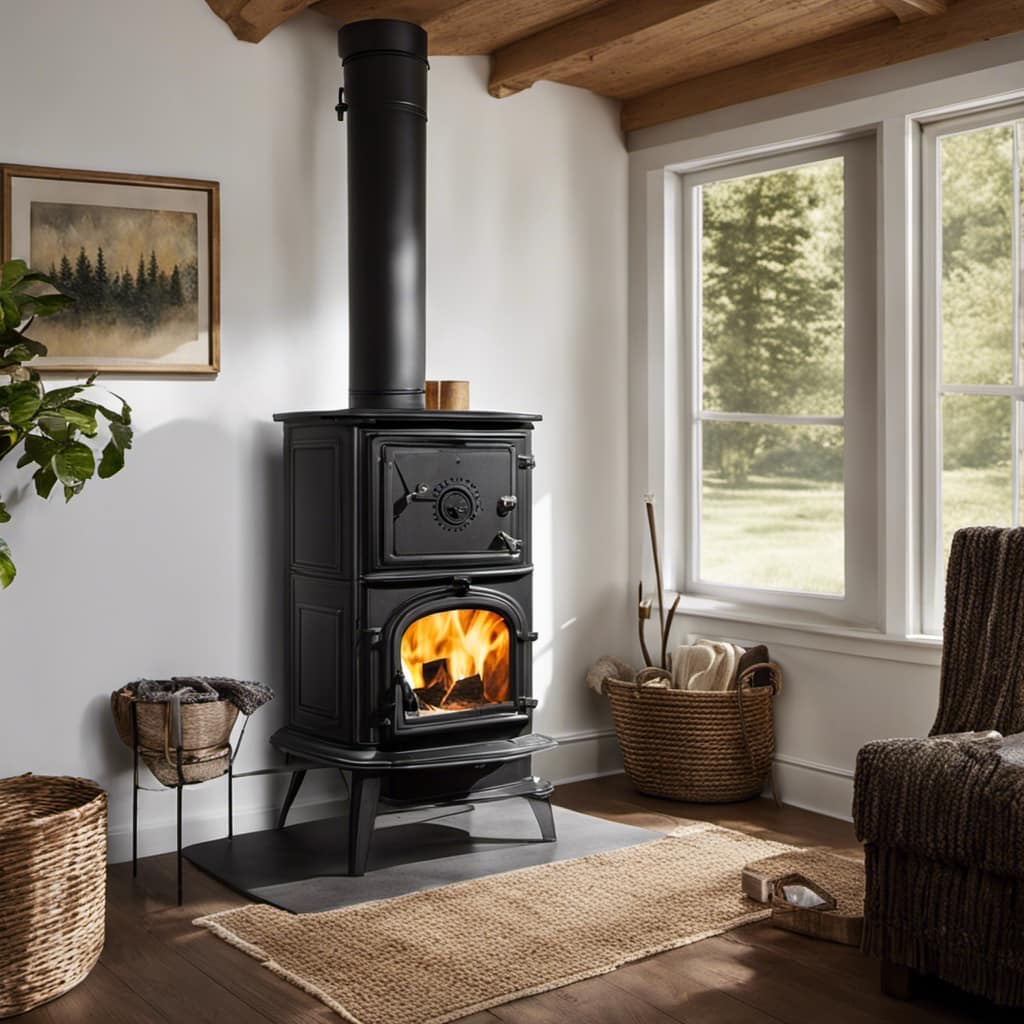
So, make sure to calculate the appropriate length and avoid common mistakes for a safe and efficient wood stove system.
Growing up surrounded by the vast beauty of nature, Sierra was always drawn to the call of the wild. While others sought the comfort of the familiar, she ventured out, embracing the unpredictable and finding stories in the heartbeat of nature.
At the epicenter of every remarkable venture lies a dynamic team—a fusion of diverse talents, visions, and passions. The essence of Best Small Wood Stoves is crafted and refined by such a trio: Sierra, Logan, and Terra. Their collective expertise has transformed the platform into a leading authority on small wood stoves, radiating warmth and knowledge in equal measure.







